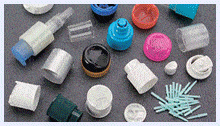Perhaps the most important part of any plastic drug container is the cap — if it isn’t secure, the integrity of the pharmaceutical inside could be compromised.
And that could be a matter of life or death. Or, at the very least, a compromised closure could lead to government regulatory sanctions and legal liability. Often time, multiple governmental jurisdictions that cross national borders have an interest in the sanctity of the entire drug-manufacturing process, from sourcing raw materials to final sale, and that most definitely includes the cap.
Simply put, pharmaceutical caps and closures protect complex and sometimes delicate pharmaceuticals so that they remain safe and effective.
One of the biggest drivers for market growth will be the gradual transition of one-piece drug vial caps over two-piece caps. Currently, most companies use injection-molded high-density polyethylene (HDPE). Migrating from these two-piece closures to one-piece closures require changes in materials, often plastics, as well as the plastic injection molding process itself.
There are many advantages to single-piece caps. For one thing, they reduce the plastic raw material used. For another, single-piece caps reduce the weight of final, overall packaging. In fact, they weigh an average of 2 grams less than the two-piece caps and closures. What’s more, they incorporate a large seal angle, which requires less torque during production. Single-piece closures can reduce resin consumption by 6 tons and carbon footprint by approximately more than 15 tons per 500 million bottles.
That’s impressive. But there is a fly in the ointment (pun intended): some plastic polymers are incompatible with substrates, and that could limit their effectiveness in some markets. For example polyethylene and polypropylene may interact with certain organic liquids and mineral acids because of their chemical composition. and this often leads to deformation of the packaging substrate or may contaminate the product.
But those challenges can be overcome. Plastics and drugs have gone together like bread and butter for decades now, and will most certainly do so in the future.
